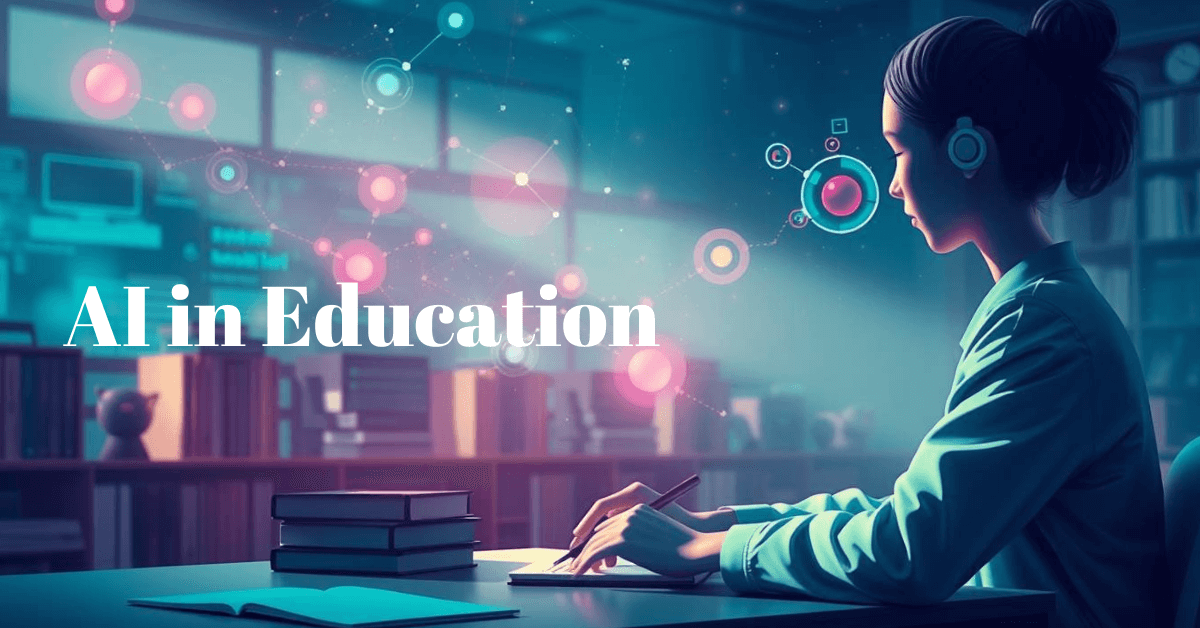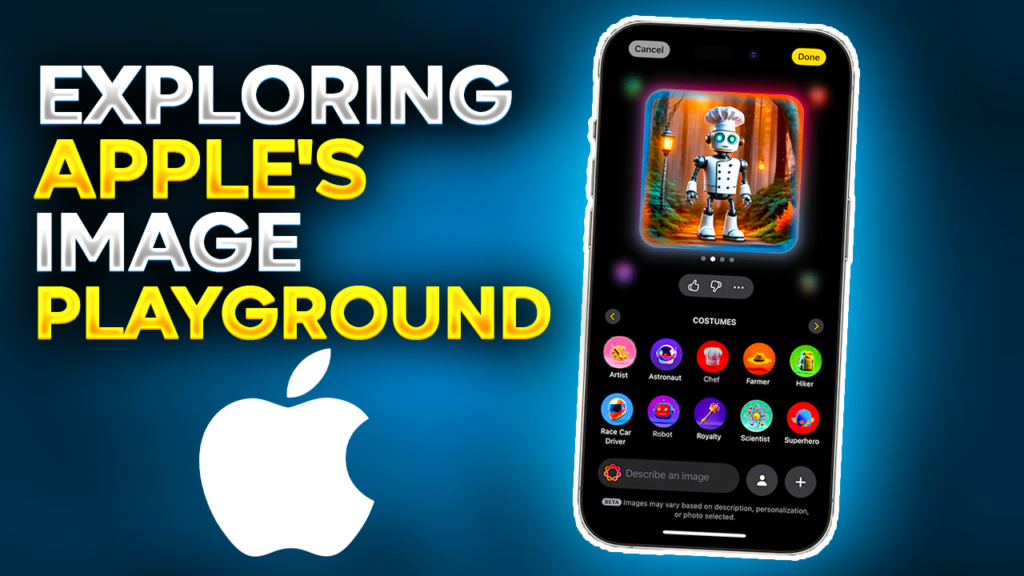Artificial Intelligence (AI) is reshaping the education sector, making learning more personalized, efficient, and accessible. From intelligent tutoring systems to AI-powered grading and administrative automation, artificial intelligence in education is revolutionizing traditional teaching methods. However, as with any technology, AI in education has its pros and cons. In this blog, we will explore how AI is used in education, its benefits and challenges, and the best AI education tools that are enhancing learning experiences.
The Role of AI in Education
The integration of AI and education has opened new possibilities for students, educators, and institutions. AI for education is not about replacing teachers but augmenting their abilities to provide better learning experiences.
1. Personalized Learning with AI in Education
One of the biggest advantages of AI in education is personalized learning. AI-driven platforms analyze students’ strengths and weaknesses to tailor learning experiences based on their needs. For example, AI-powered learning management systems (LMS) like Coursera and Duolingo adjust coursework difficulty based on student performance, ensuring an optimized learning path for each individual.
2. AI-Powered Virtual Tutors and Intelligent Tutoring Systems
AI in education includes intelligent tutoring systems that provide real-time assistance to students. These AI tutors can answer questions, provide explanations, and guide students through learning modules. Chatbots like Squirrel AI and Carnegie Learning use AI to offer personalized tutoring, making learning more engaging and effective.
3. Automated Grading and Assessment
One of the most time-consuming tasks for educators is grading assignments and exams. AI for education is streamlining this process by automating assessments. AI-powered grading systems, like Gradescope, evaluate multiple-choice, short-answer, and even essay-type responses, saving time for teachers and ensuring fair grading.
4. AI in Administrative Tasks
Artificial intelligence in education is also improving administrative efficiency. AI automates student enrollment, class scheduling, and attendance tracking, allowing educators to focus on teaching rather than paperwork. AI chatbots used in universities help answer students’ inquiries regarding admissions, course details, and deadlines, reducing administrative workload.
5. AI for Special Education and Accessibility
AI benefits in education extend to students with disabilities by making learning more accessible. Speech-to-text software, AI-powered sign language translators, and adaptive learning tools help students with special needs access education seamlessly. For instance, Microsoft’s Seeing AI and Google’s Lookout assist visually impaired students in navigating educational materials.
Pros and Cons of AI in Education
While AI in education offers numerous benefits, it also has some drawbacks. Here’s a breakdown of the AI in education pros and cons:
Pros of AI in Education
- ✅ Personalized Learning – AI tailors education to individual student needs, improving engagement and retention.
- ✅ Efficiency for Educators – AI automates repetitive tasks like grading and administration, allowing teachers to focus on instruction.
- ✅ 24/7 Accessibility – AI-powered tutors and chatbots assist anytime, anywhere, making learning more flexible.
- ✅ Data-Driven Insights – AI analyzes student performance to help educators make data-driven teaching decisions.
- ✅ Enhanced Engagement – AI gamifies learning, making it interactive and enjoyable for students.
- ✅ Accessibility for All – AI-powered assistive technologies help students with disabilities access education.
Cons of AI in Education
- ❌ Lack of Human Interaction – AI-driven learning tools may reduce student-teacher interaction, affecting emotional intelligence development.
- ❌ Data Privacy Concerns – AI collects vast amounts of student data, raising concerns about privacy and security.
- ❌ High Implementation Costs – AI technology requires significant investment in software, training, and infrastructure.
- ❌ Bias in AI Algorithms – AI can reflect biases in training data, potentially leading to unfair outcomes in assessments.
- ❌ Over-Reliance on Technology – Dependence on AI tools may reduce critical thinking and problem-solving skills in students.
How Can AI Be Used in Education?
AI is already transforming the education sector in multiple ways. Let’s explore how AI is used in education today:
1. AI-Powered Learning Platforms
EdTech platforms like Khan Academy, Coursera, and Udacity use AI to provide personalized courses and adaptive learning experiences.
2. Virtual Classrooms and AI Chatbots
AI-powered chatbots assist students with homework, doubts, and administrative queries in virtual classrooms.
3. AI in Exam Proctoring
AI-powered tools like Proctorio and Examity monitor online exams using facial recognition and behavior analysis to prevent cheating.
4. AI-Driven Career Guidance
AI provides career counseling based on student interests, skills, and job market trends, helping them choose the right educational path.
5. AI for Language Learning
Apps like Duolingo and Babbel use AI to personalize language lessons and provide instant feedback to learners.
Best AI Education Tools: Top 10 AI Tools for Learning
The rise of AI in education has led to the development of several AI-driven learning platforms. Here are the top 10 AI education tools that are transforming learning experiences:
- Squirrel AI – AI-powered adaptive learning platform.
- Grammarly – AI writing assistant for students and educators.
- Coursera – AI-driven personalized learning platform.
- Quizlet – AI-powered flashcards and study tools.
- Carnegie Learning – Intelligent tutoring system.
- Century Tech – AI-driven personalized learning platform.
- Duolingo – AI-powered language learning tool.
- Gradescope – AI-driven automated grading system.
- Khan Academy – AI-driven educational resources for students.
- IBM Watson Education – AI-powered solutions for personalized learning.
Why AI is Bad for Education? (Challenges and Concerns)
While AI has transformed education, it is not without its drawbacks. Here’s how AI can be bad for education:
- Reduced Teacher-Student Interaction – AI may replace human connection in learning, affecting social skills.
- Algorithm Bias – AI systems may favor certain demographics over others, leading to unfair learning experiences.
- Digital Divide – Not all students have access to AI-powered learning due to infrastructure limitations.
- Privacy Risks – AI tools collect student data, raising ethical concerns over security and misuse.
- Lack of Creativity – Over-reliance on AI may limit students’ ability to think critically and creatively.
The Future of AI and Education
The future of artificial intelligence and education will see more advanced AI-driven personalized learning systems, virtual reality classrooms, and AI-powered career guidance tools. However, the ethical and social implications of AI in education must be addressed to ensure that technology supports rather than replaces human educators. By balancing AI’s advantages with mindful implementation, education and AI can work together to create a smarter, more efficient, and accessible learning environment for students worldwide.
Final Thoughts
AI in education is revolutionizing the way we learn and teach. From AI-powered tutoring to automated assessments and personalized learning experiences, artificial intelligence in education is making learning more efficient and engaging. However, the pros and cons of AI in education must be carefully considered to ensure that technology enhances rather than disrupts the learning experience. By using the best AI education tools while maintaining ethical considerations, we can harness the power of AI to create a brighter future for education.





